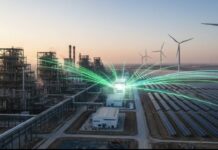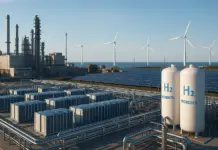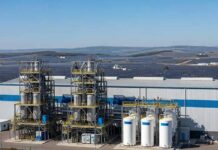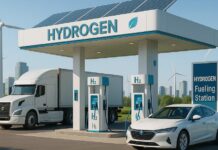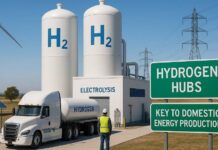Largest green hydrogen production plant of Japan has been inaugurated in Hokuto City – Yamanashi Prefecture, which is a $122 million project can also redefine the role of hydrogen when it comes to industrial decarbonization.
The Green Hydrogen Park Hakushu, which is developed by the Yamanashi government in addition to ten major corporate partners including the likes of Toray, Siemens Energy, Suntory Holdings, Tokyo Electric Power Company Holdings (TEPCO), Canadavia, and Miura, marks a major evolution in the clean energy transition of Japan.
Due to a 16 MW capacity, the Green Hydrogen Park Hakushu has started supplying renewable hydrogen by way of a dedicated two-kilometer pipeline to the Minami Alps Hakushu Mineral Water Plant of Suntory and the Hakushu Distillery. The hydrogen fuels low-NOx boilers and also supports major production processes like steam sterilization and also whisky distillation, thereby replacing fossil fuels along with carbon-free energy sources.
At full capacity, this largest green hydrogen production plant of Japan is going to produce almost 2,200 tonnes of hydrogen per year, offsetting almost 16,000 tonnes of CO₂ emissions every year. The initiative goes on to demonstrate the feasibility when it comes to integrating large-scale hydrogen systems within the industrial operations, especially across sectors like food and beverage manufacturing, in which continuous heat and steam happen to be essential.
Apparently, the technological backbone of the project goes on to depend on polymer electrolyte membrane (PEM) electrolyzers that are supplied by Siemens Energy as well as Canadavia. Installed in dual production halls, the systems go on to convert renewable electricity, which is sourced primarily from solar power, into hydrogen with high efficiency as well as agility.
Notably, the funding of the project stems from the New Energy and Industrial Technology Development Organization (NEDO) of Japan under its Green Innovation Fund Program, therefore reflecting the commitment by the government to scale hydrogen beyond the pilot projects. The facility also happens to be designed to act as a regional supply hub, exporting hydrogen across the Tokyo metropolitan area, thereby making both industrial resilience and regional energy security robust.
Project partners such as Toray, TEPCO, and Miura are engaged in terms of a multi-year research effort so as to elevate the system dependability and also its cost-effectiveness. Operational data collected till 2026 is going to inform strategies when it comes to performance optimization, maintenance efficiency as well as storage management. The outcomes are expected to shape the broader hydrogen rollout strategy of Japan and at the same time also support the exportable technology standards creation.
This research focus highlights a major challenge when it comes to the scalability of hydrogen – cost reduction. While the technological prowess and leadership of Japan in electrolyzer design and also materials science is pretty strong, commercial viability still remains pretty limited without consistent public investment as well as clear market signals. The data-driven approach of the consortium looks to close that gap, hence demonstrating that hydrogen can very well become an environmental and economic asset when it comes to heavy industry.
It is worth noting that a central ambition of the Hakushu project happens to be establishing a complete circular hydrogen energy system by 2026. The facility blends solar power, hydrogen storage, electrolysis, and also combustion for industrial heat, therefore creating a self-contained and zero-carbon supply chain. Through achieving a renewable-to-hydrogen-to-heat cycle, the project looks forward to proving that local and decentralized hydrogen systems can function independently from fossil fuels.
When it comes to Suntory, the initiative goes on to support corporate sustainability objectives while at the same time decreasing exposure to fossil energy markets that are volatile. As for Japan, it offers a replicable model when it comes to industries that are dependent on heat-intensive processes, therefore demonstrating how hydrogen can get embedded within the production lines without disrupting any sort of efficiency or output.

